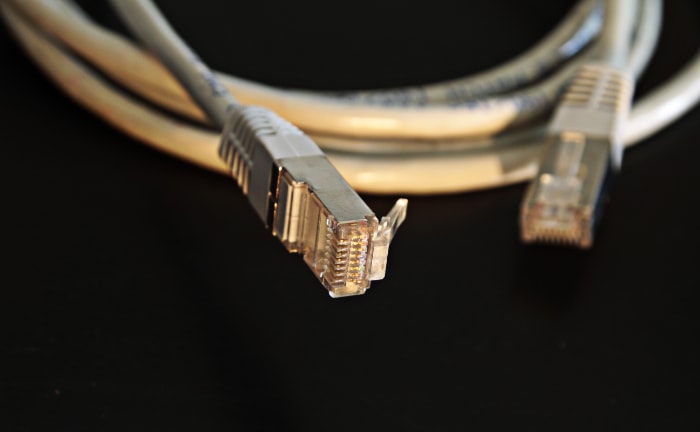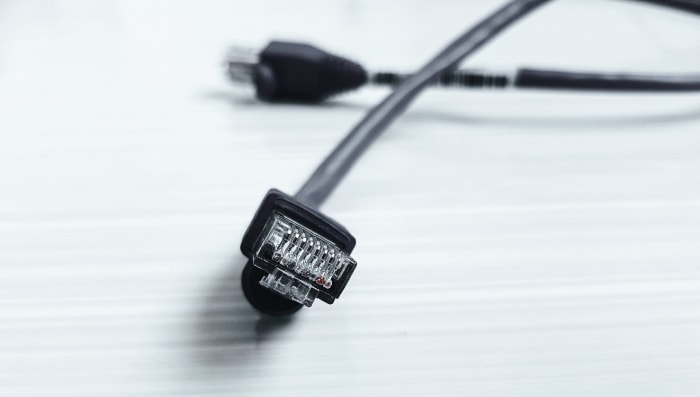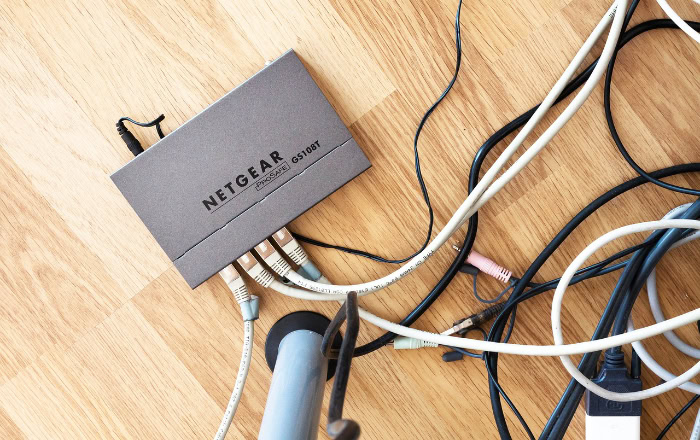Cat6a vs. Cat7: What Fits Your Network?

The type of Ethernet cable you choose can shape the reliability and performance of your network for years to come. As technology advances and data demands grow, Cat6a and Cat7 have emerged as strong contenders for those seeking high-speed, future-ready connections.
From supporting everyday activities like streaming and gaming to handling data-intensive business operations, these cables offer unique benefits that cater to diverse environments.
While Cat6a delivers impressive speeds with affordability and flexibility, Cat7 raises the bar with enhanced shielding and bandwidth for specialized situations. Each has strengths that could make or break your network’s performance depending on your setup and goals.
Technical Specifications Compared
When evaluating the differences between Cat6a and Cat7 Ethernet cables, it’s essential to assess their technical specifications, as these directly impact network performance, durability, and adaptability. Speed, bandwidth, shielding, and physical construction all play a significant role in determining how well each cable meets specific requirements.
Speed and Bandwidth
Speed and bandwidth are two fundamental aspects of any Ethernet cable, influencing its ability to handle large volumes of data and support advanced applications. Cat6a cables support speeds of up to 10 Gbps for distances of up to 100 meters, which is sufficient for most residential and commercial setups.
They also operate at a frequency of up to 500 MHz, offering reliable performance across a wide range of uses, from video streaming to online gaming and standard business workflows.
Cat7 cables, on the other hand, push the boundaries with their enhanced bandwidth capacity of 600 MHz. While they also support up to 10 Gbps at a distance of 100 meters, they have the added capability of achieving performance speeds as high as 40 Gbps over shorter distances.
This makes Cat7 an attractive option for specialized use cases such as data centers and server rooms, where ultra-high-speed connections are essential for efficiency. The higher frequency of Cat7 enables faster data transmission rates and improved performance in environments with heavy network traffic.
Shielding Design
Another major distinction between Cat6a and Cat7 lies in their shielding, which affects the cable’s ability to resist interference and maintain a stable connection in environments prone to electromagnetic interference (EMI). Cat6a cables are available in both unshielded twisted pair (UTP) and shielded twisted pair (STP) variants.
While the unshielded version is more flexible and easier to install, the shielded version offers added protection against crosstalk and EMI, making it a better fit for high-interference settings.
Cat7 cables, however, come exclusively with a shielded design known as S/FTP (shielded/foiled twisted pair). Each pair of wires is individually shielded with foil, and the entire cable is further encased in an additional layer of braided shielding.
This comprehensive approach drastically reduces both internal and external interference, leading to superior signal integrity and performance consistency. The robust shielding makes Cat7 particularly ideal for environments with significant electrical noise, such as industrial facilities, hospitals, and large office buildings.
Cable Construction
The physical construction of Ethernet cables is another critical factor, as it influences their flexibility, ease of installation, and suitability for cable management systems. Cat6a cables tend to be thinner and more flexible compared to Cat7, which simplifies installation in tight spaces and allows for easier handling during setup and maintenance.
The reduced thickness of Cat6a also contributes to a smaller bend radius, enabling better maneuverability without compromising performance.
In contrast, Cat7 cables are often thicker and more rigid due to the additional shielding layers. While this increases their durability and resistance to wear, it can make installation more challenging, especially in confined spaces or when routing the cables through walls or cable ducts.
The rigidity of Cat7 also requires careful handling to avoid damaging the shielding or bending the cable beyond its tolerance. Although the sturdier design enhances overall performance and longevity, it may pose difficulties for users seeking a quick and straightforward installation process.
Performance in Real-World Scenarios

The true measure of an Ethernet cable lies in how it performs during everyday use, especially under varying environmental conditions and demanding applications. While technical specifications provide a foundation for comparison, real-world performance highlights practical considerations, including how the cables handle interference, maintain latency and stability, and adapt to evolving standards.
Interference Resistance
Shielding plays a crucial role in determining how well an Ethernet cable performs in environments with high levels of electromagnetic interference (EMI). Factories, data centers, hospitals, and industrial spaces are prime examples of areas where EMI is prevalent due to heavy machinery, wiring systems, and electronic devices operating simultaneously.
In such settings, interference can cause signal degradation, packet loss, or slower speeds, making shielding an essential feature for consistent performance.
Cat6a cables, especially the shielded variants (STP), offer decent protection against interference but may fall short in environments with exceptionally high EMI. Their shielding reduces crosstalk, which occurs when signals from adjacent cables disrupt one another, but external noise can still impact their performance.
Cat7 cables take shielding to a higher level with their S/FTP design. Each twisted pair is individually wrapped in foil, and the entire cable is encased in an additional layer of braided shielding.
This layered design minimizes external EMI and ensures the data signal remains stable and uninterrupted, even in challenging situations. For high-EMI environments, Cat7 is often the preferred choice due to its superior interference resistance and reliability.
Latency and Stability
Latency and connection stability are critical for applications like gaming, streaming, and transferring large files, where fluctuations in network performance can lead to delays or disruptions. Cable design, shielding, and bandwidth directly influence how well a cable delivers consistent, low-latency connections.
Cat6a is suitable for most modern applications, providing reliable stability for gaming and 4K streaming over longer distances. Its ability to support 10 Gbps speeds ensures smooth data transmission, making it a dependable option for households and small businesses.
When paired with compatible networking equipment, Cat6a can handle large file transfers without compromising speed or stability, maintaining its performance even under moderate network traffic.
For more demanding scenarios, Cat7 excels by delivering improved latency and stability. Its higher frequency capacity (600 MHz) allows faster data transmission, reducing latency even in data-intensive setups like 8K streaming or large-scale file sharing.
The advanced shielding in Cat7 also contributes to better stability, as interference-related disruptions are minimized. In environments requiring maximum performance, Cat7’s design ensures consistent connection quality and response times critical for high-stakes applications.
Longevity
As technology continues to evolve, the risk of cable standards becoming outdated is a consideration for both home users and businesses. Ethernet standards like Cat5e and Cat6 have gradually been phased out in favor of newer generations like Cat6a and Cat7, which offer higher speeds and better shielding.
However, the emergence of Cat8 raises questions about the longevity of Cat6a and Cat7 cables.
Cat6a remains a strong option for general use, as its 10 Gbps speed and 500 MHz bandwidth are adequate for most applications. It is widely supported by current networking hardware, making it a future-proof investment for users who don’t require cutting-edge performance.
For those aiming to upgrade their networks incrementally, Cat6a provides a balance between affordability and functionality.
Cat7 is slightly more advanced but faces challenges in terms of long-term compatibility. While it delivers excellent performance today, its reliance on non-standard connectors like GG45 or TERA limits its adaptability with newer technologies.
As Cat8 continues to gain traction, Cat7 might become less viable for future upgrades, despite its high shielding and bandwidth capabilities.
Installation and Compatibility

Ethernet cables are not just about performance on paper; their practical usability during installation and compatibility with devices play a significant role in their adoption. Cat6a and Cat7 differ in how easy they are to install, the types of connectors they use, and how well they integrate with older and newer network setups.
Physical Challenges
The physical construction of Ethernet cables can greatly influence how easy they are to install, especially in spaces that involve tight turns, cable ducts, or structured cable management systems. Cat6a cables, with their thinner and more flexible design, offer a simpler installation experience.
Their smaller bend radius means they can be routed through tight spaces with relative ease, making them an excellent choice for home networks and offices where cable management is a priority.
Cat7 cables present more challenges due to their thicker and heavier shielding. The robust S/FTP construction, while beneficial for reducing interference, makes them less flexible and more difficult to manipulate during installation.
Cable ducts and other management systems that are designed for thinner cables may struggle to accommodate Cat7’s bulk. Additionally, the rigidity of Cat7 makes it harder to achieve sharp bends without risking damage to the shielding or compromising performance.
For large-scale installations or scenarios where space is limited, these physical constraints can create extra complexity.
Connector Types
The type of connector used by an Ethernet cable directly impacts its compatibility with networking equipment. Cat6a cables use the standard RJ45 connectors, which are widely supported by most routers, switches, and network cards.
The RJ45 design is user-friendly and ensures seamless integration with existing network hardware, making Cat6a a convenient option for users who want simplicity during setup.
Cat7 cables, however, are designed to work with more advanced connectors, such as GG45 or TERA. These connectors offer improved performance, particularly for applications requiring higher transmission frequencies, but they are not as widely supported as RJ45.
While Cat7 cables can still work with RJ45 connectors in most cases, their full performance potential may not be realized unless GG45 or TERA connectors are used. This limitation can lead to additional costs for adapters or upgraded connectors, especially in cases where new equipment needs to be purchased to fully utilize Cat7’s capabilities.
Backward Compatibility
Ethernet cables are often used in mixed environments where older devices operate alongside newer ones. Compatibility with legacy hardware is an important consideration, especially for users upgrading their networks incrementally.
Cat6a cables offer excellent backward compatibility, as they are designed to work seamlessly with older networking standards and devices. Even when connected to routers or switches that do not support the latest Ethernet speeds, Cat6a cables can still deliver stable, reliable performance.
Cat7 cables are also backward-compatible in the sense that they can function with older devices when paired with RJ45 connectors. However, this compatibility can come with trade-offs.
The additional shielding and advanced connector options that make Cat7 excel in modern setups may not provide noticeable benefits when used with older, slower hardware. Moreover, the need for adapters or specialized connectors can create extra complexity for those looking to integrate Cat7 into an existing network.
Users who prioritize plug-and-play simplicity may find Cat6a more convenient in such scenarios.
Considering installation complexity, connector availability, and device compatibility, both cables cater to different needs. While Cat6a offers greater accessibility and ease of use, Cat7’s design is better suited for installations that require higher shielding and advanced connectors, provided the environment supports such requirements.
Conclusion
Cat6a and Cat7 represent two distinct Ethernet cable standards, each with advantages suited to different environments and needs. Evaluating their differences in performance, installation, and cost reveals how well they align with various use cases, from everyday home networks to demanding enterprise setups.
In terms of performance, Cat6a delivers up to 10 Gbps at 100 meters with ease, making it an excellent choice for most residential and small business applications. Its 500 MHz bandwidth is sufficient for gaming, 4K streaming, and general productivity.
Cat7 steps up with enhanced shielding and 600 MHz bandwidth, offering even greater interference resistance and higher performance for industrial or high-traffic environments. The ability to achieve speeds of 40 Gbps at shorter distances makes Cat7 ideal for specialized use cases such as data centers.
For installation, Cat6a’s flexibility and standard RJ45 connectors simplify the process, allowing it to fit smoothly into existing setups. Cat7, however, demands more attention to detail due to its thicker cables, rigid construction, and use of GG45 or TERA connectors.
Installation challenges and additional grounding requirements can pose complexities for users unfamiliar with these features.
Cost considerations further differentiate the two. Cat6a’s affordability and widespread compatibility make it a budget-friendly option for general use, while Cat7’s premium pricing is more justified in high-EMI or performance-critical environments where its shielding and bandwidth stand out.
The hidden expenses tied to Cat7’s specialized connectors and installation requirements may deter casual users or small-scale deployments.
Recommendations
- Home Networks: Cat6a is the clear winner for home setups, offering reliable performance at a fraction of the cost. It is more than adequate for gaming, streaming, and everyday internet use while remaining easy to install and maintain.
- Small Businesses: Cat6a remains a practical choice for most small offices, providing excellent speed and compatibility for standard workflows and moderate data traffic.
- Enterprise and Specialized Environments: Cat7 is better suited for enterprise setups, such as data centers, large-scale offices, or industrial facilities, where shielding and advanced bandwidth capabilities are critical. Its higher cost may be justified by its ability to minimize interference and support specialized applications requiring ultra-high speeds.
Final Verdict
For general users seeking a balance of performance, affordability, and ease of installation, Cat6a is the smarter investment. It provides dependable speed and bandwidth without breaking the budget, making it ideal for home and small business networks.
Cat7, on the other hand, is a premium option reserved for scenarios where interference resistance and extreme performance are non-negotiable. Enterprise-level users and those managing high-traffic, EMI-heavy environments will find Cat7’s advanced features worth the investment, but for most use cases, Cat6a offers the best overall value.


